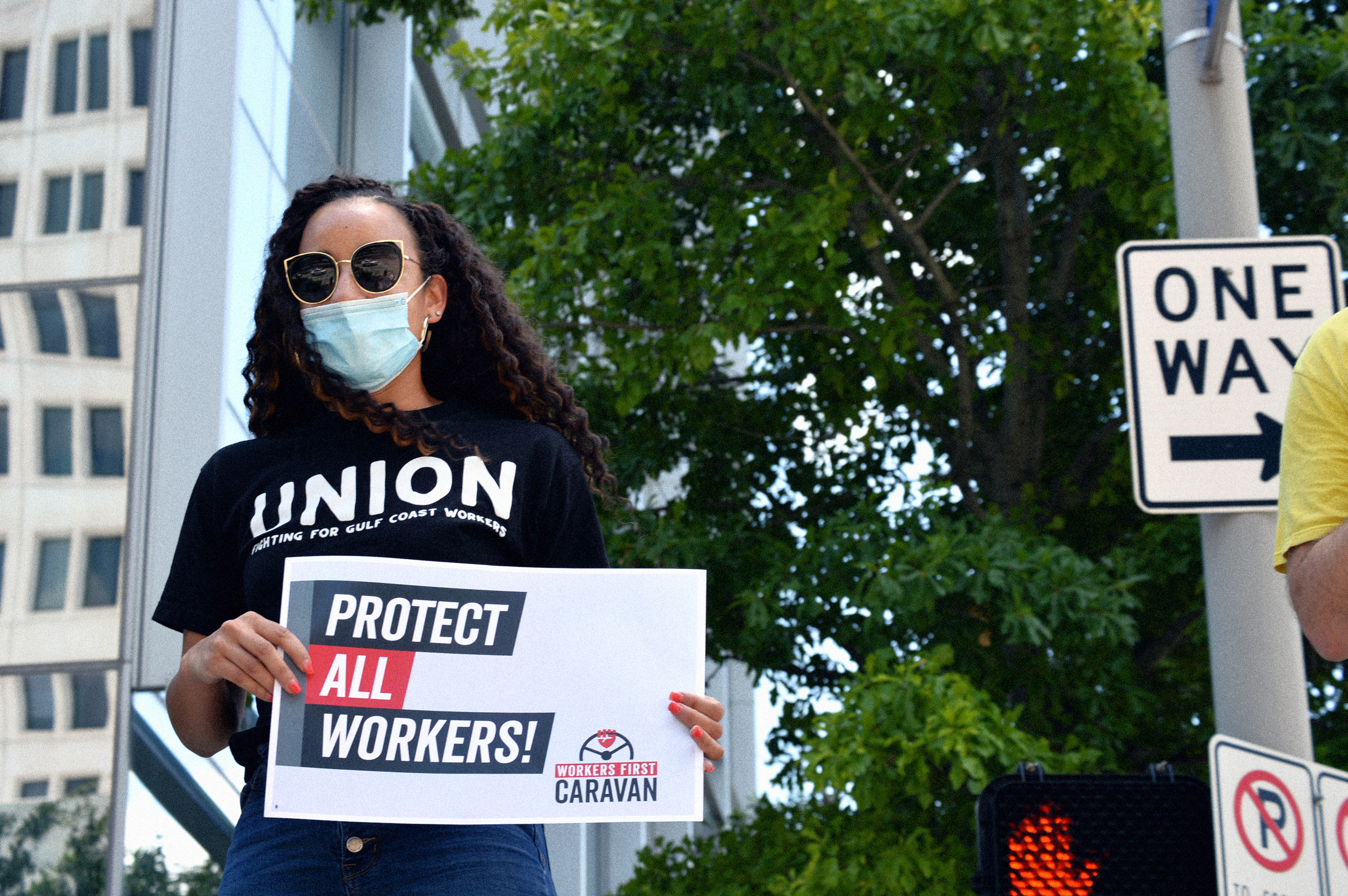The U.S. economy gained 134,000 jobs in September, and unemployment was down slightly to 3.7%, according to figures released this morning by the U.S. Bureau of Labor Statistics. Continued slow wage growth means the Federal Reserve's Open Market Committee is premature in raising interest rates.
In response to the September job numbers, AFL-CIO Chief Economist William Spriggs tweeted:
Labor force participation stayed flat at 62.7% (same as August) as wage gains remained modest at only 2.8% over last September. Slow wage growth, despite recent boosts in output, means higher productivity growth and falling unit labor costs. So much for the tax cuts. @AFLCIO pic.twitter.com/xavQ8QWRni
— William E. Spriggs (@WSpriggs) October 5, 2018
Continued slow wage growth, only 2.8% over the year, means the @federalreserve is being premature in increasing interest rates. The productivity gains of the last two quarters are once again going to the bosses not the workers. Falling labor share increases inequality. @AFLCIO
— William E. Spriggs (@WSpriggs) October 5, 2018
Employment gains were in higher wage industries, manufacturing leading the way, while jobs losses were in lower wage in retail trade, leisure and hospitality and other services. This makes slow wage growth difficult to explain. @AFLCIO pic.twitter.com/QnFdpZYlvV
— William E. Spriggs (@WSpriggs) October 5, 2018
While the official unemployment rate fell to 3.7% the broader measure of labor market slack (U-6) including part-timers seeking full-time work and discouraged workers ticked up a tiny bit from 7.4 to 7.5% because of part-timers seeking full-time work @AFLCIO pic.twitter.com/dqdk1uXRsB
— William E. Spriggs (@WSpriggs) October 5, 2018
Little discussed, low-wage growth has not slowed labor force participation growth for Latinos, the employment-to-population rate for Latinos is higher than for whites. This alsoreflects differences in the age profile of the younger Latino population compared to whites. @AFLCIO pic.twitter.com/E4RJuaVfDQ
— William E. Spriggs (@WSpriggs) October 5, 2018
In NOT a good sign, the share of unemployed workers that have been looking over 26 weeks has been rising. #JobsReport @AFLCIO combined with the increase in part-timers seeking full-time work, 3.7% unemployment is not so rosy. pic.twitter.com/GjBvrWkFHV
— William E. Spriggs (@WSpriggs) October 5, 2018
Another, it is NOT good, despite continued economic growth, public investment continues to lag. The loss of local government jobs, including in education, is a bad sign for long term economic growth. @AFLCIO @OECDeconomy @AFTunion @AFSCME #JobsReport pic.twitter.com/gtZzZAi97H
— William E. Spriggs (@WSpriggs) October 5, 2018
The drop in September of Local Government Employment, slows the recovery of public investment. This makes people less well off--fewer public services at the level where the delivery is felt. #JobsReport @AFTunion @AFSCME @AFLCIO pic.twitter.com/Q5YQPKvQ1p
— William E. Spriggs (@WSpriggs) October 5, 2018
Last month's biggest job gains were in professional and business services (54,000), health care (26,000), transportation and warehousing (24,000), construction (23,000), manufacturing (18,000) and mining (6,000). Employment in leisure and hospitality declined over the month (-17,000). Employment showed little or no change over the month in other major industries, including wholesale trade, retail trade, information, financial activities and government.
Among the major worker groups, the unemployment rate for adult women (3.3%) and blacks (6.0%) declined, while the rate for Asians (3.5%) increased. The jobless rates for teenagers (12.8%), Hispanics (4.5%), adult men (3.4%) and whites (3.3%) showed little or no change in September.
The number of long-term unemployed (those jobless for 27 weeks or more) was essentially unchanged in September and accounted for 22.9% of the unemployed.


